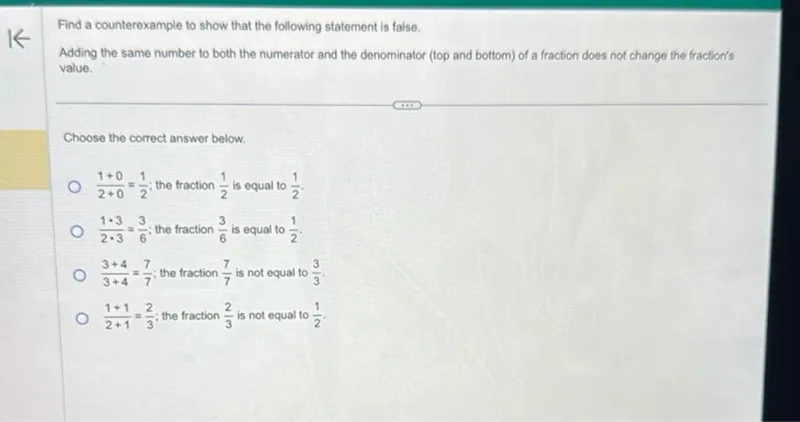Questions: Find a counterexample to show that the following statement is false. Adding the same number to both the numerator and the denominator (top and bottom) of a fraction does not change the fraction's value. Choose the correct answer below. (1+0)/(2+0) = 1/2 ; the fraction 1/2 is equal to 1/2. (1 * 3)/(2 * 3) = 3/6; the fraction 3/6 is equal to 1/2. (3+4)/(3+4) = 7/7; the fraction 7/7 is not equal to 3/3. (1+1)/(2+1) = 2/3; the fraction 2/3 is not equal to 1/2.

Transcript text: Find a counterexample to show that the following statement is false.
Adding the same number to both the numerator and the denominator (top and bottom) of a fraction does not change the fraction's value.
Choose the correct answer below.
$\frac{1+0}{2+0}=\frac{1}{2} ;$ the fraction $\frac{1}{2}$ is equal to $\frac{1}{2}$.
$\frac{1 \cdot 3}{2 \cdot 3}=\frac{3}{6}$; the fraction $\frac{3}{6}$ is equal to $\frac{1}{2}$.
$\frac{3+4}{3+4}=\frac{7}{7}$; the fraction $\frac{7}{7}$ is not equal to $\frac{3}{3}$.
$\frac{1+1}{2+1}=\frac{2}{3}$; the fraction $\frac{2}{3}$ is not equal to $\frac{1}{2}$.





